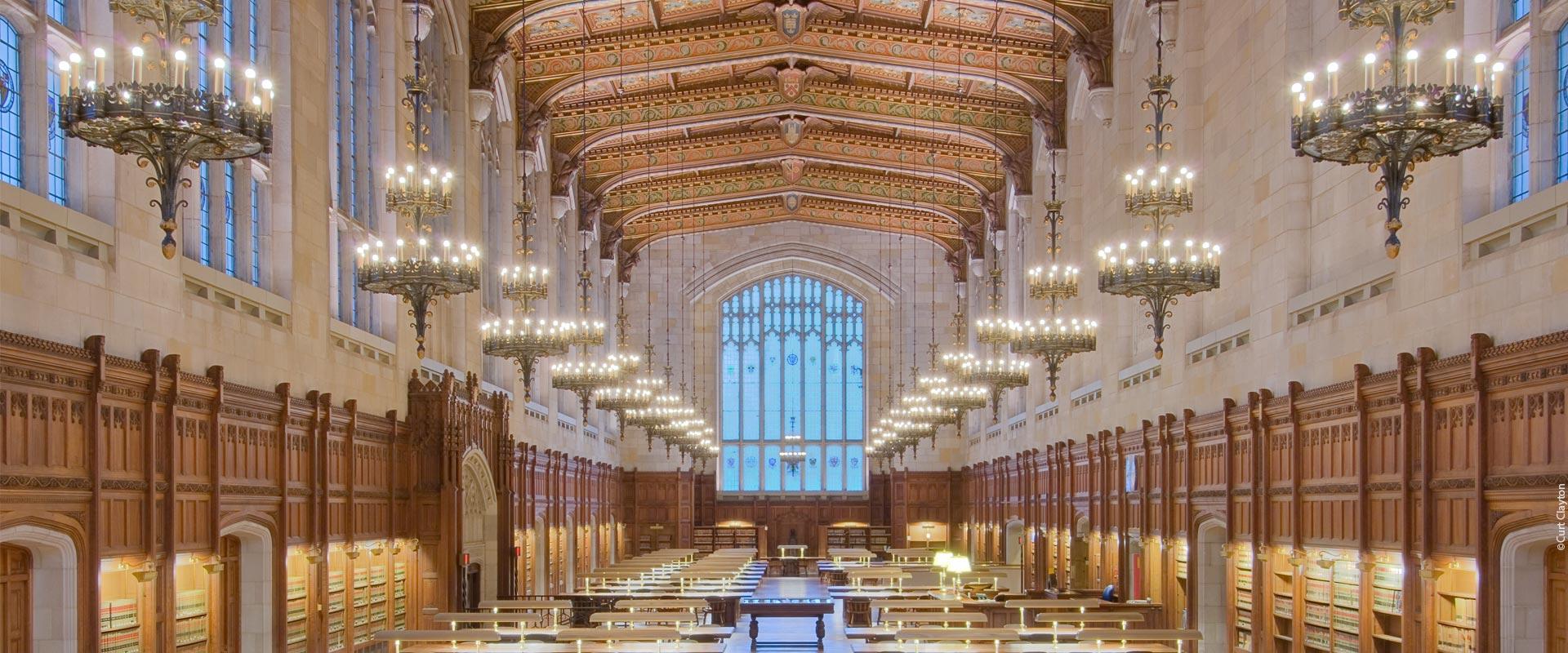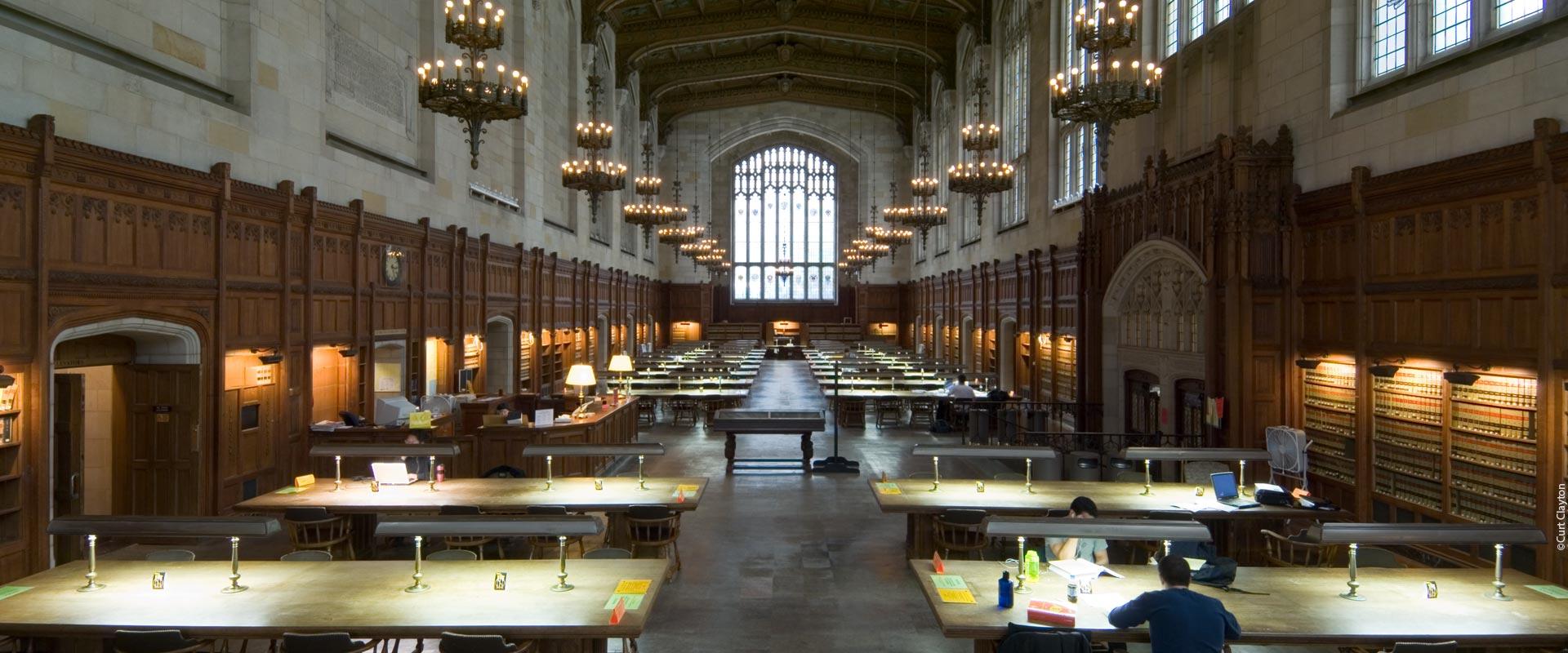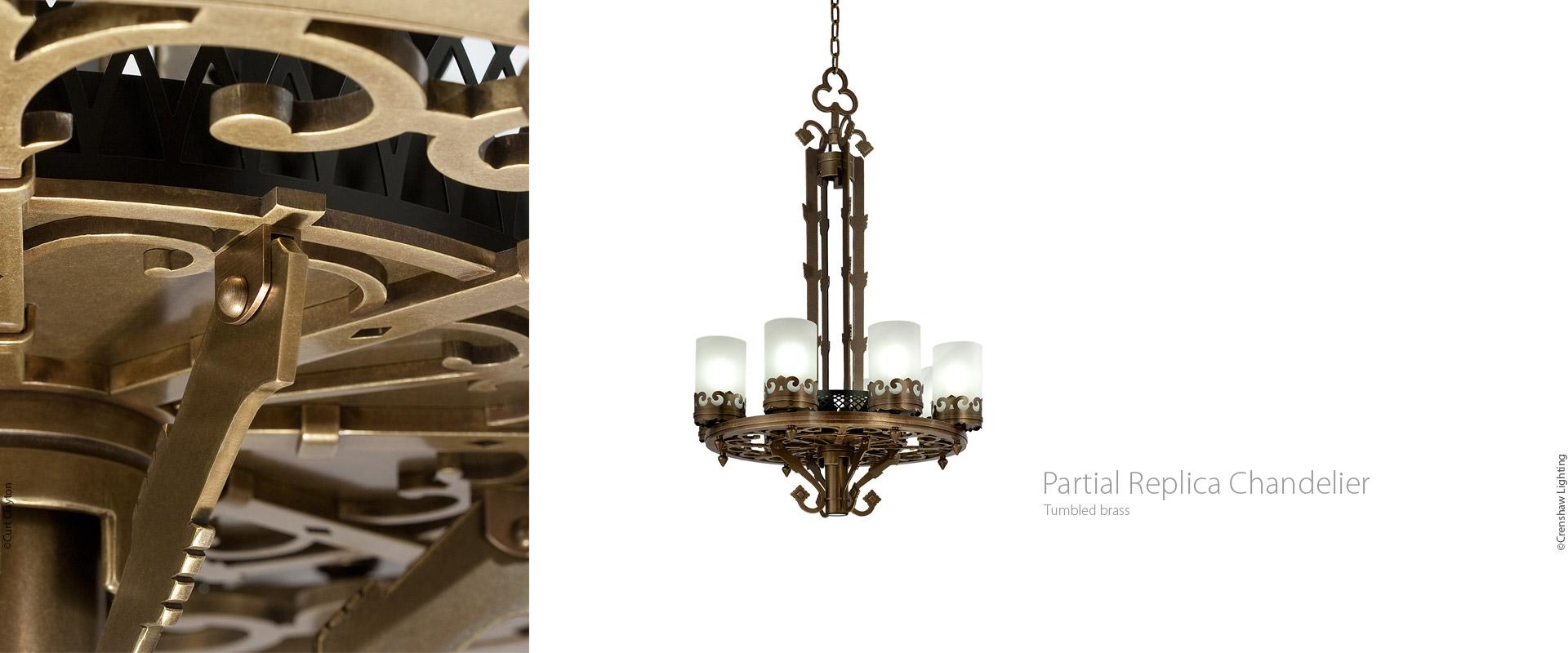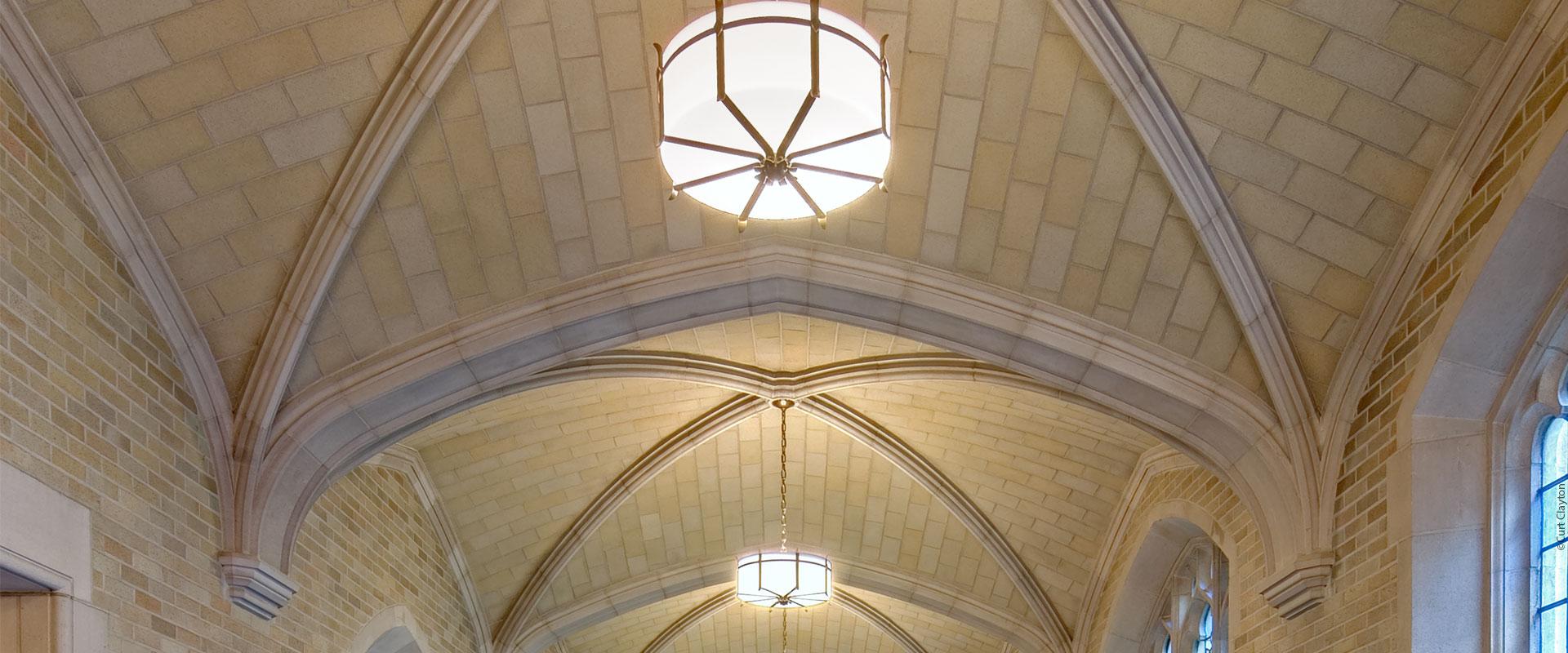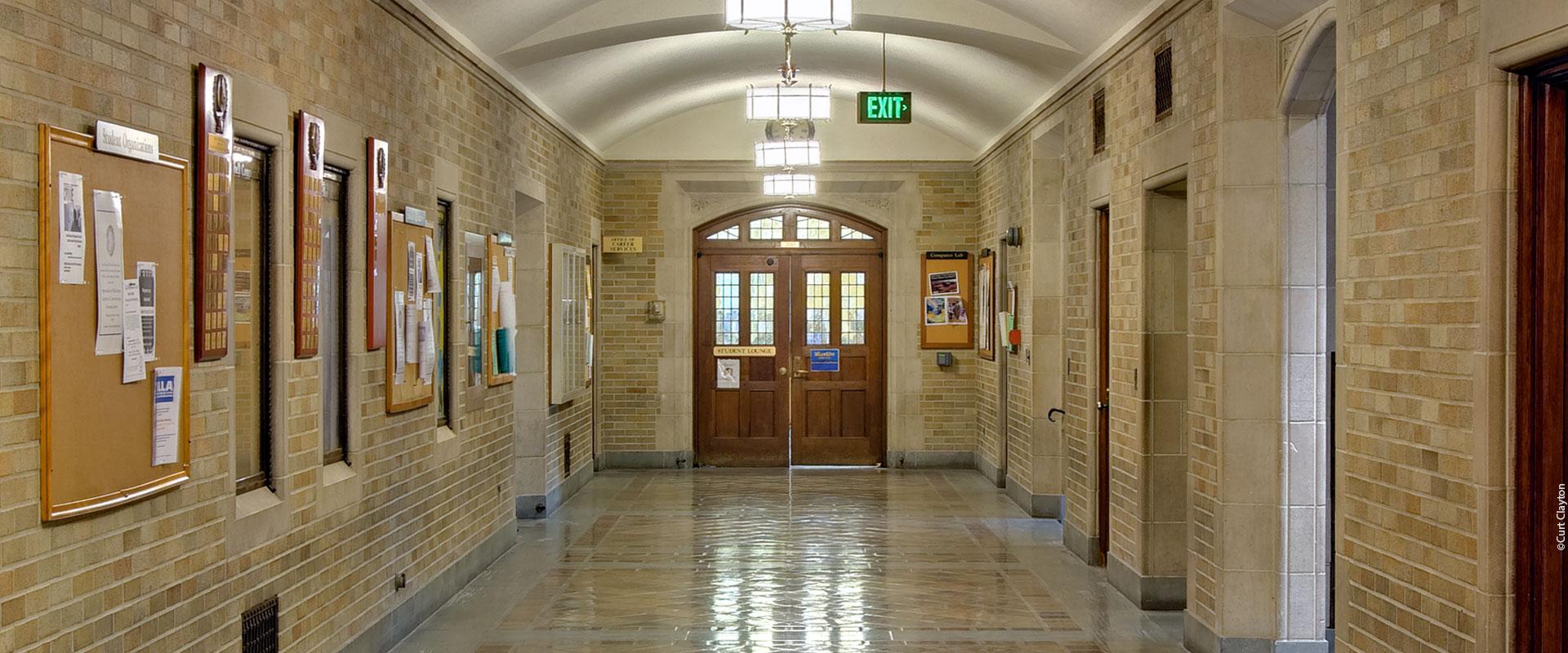University of Michigan
The William W. Cook Legal Research Library at the University of Michigan was built in 1931 at the bequest of William Cook, a lawyer and graduate of the university’s law school. Its grand Gothic style and elaborate architectural detailing have garnered national recognition, and it is listed on the National Register of Historic Places.
When Lord Aeck Sargent Architects and Gary Steffy Lighting Design teamed up to address the restoration of the Law Library in 2008, they selected Crenshaw as the historic lighting manufacturer. They first focused on the library’s reading room. Over the years, the room had become dingy and poorly lit—hardly the ideal setting for reading. The team worked to improve light levels in the space through several means, chiefly by cleaning and restoring the ceilings and walls to improve reflectance and by adding cleverly concealed uplights to wash the walls with light, highlight the ceiling, and improve ambient light levels.
Steffy, a master lighting designer, did not attempt to push light levels through the original historic fixtures and, in fact, reduced light output from the table lamps. Rather, his goal was to raise ambient light levels in the room as a whole to create balance; reduce eyestrain from bright, focalized light sources; and highlight the room’s architectural beauty. Energy efficiency and lamp life were improved by converting the stack lights to four-pin compact fluorescents and converting the table reading lamps to lower wattage bi-pin fluorescent T5 lamps, a reduction from the higher output T12s which had lit the fixtures since the 1950s. Crenshaw restored and replicated both the table reading lamps and the stack lights. The table lamps are particularly beautiful examples of heavy-gauge machined brass construction with a unique satin brass and nickel two-tone finish.
Crenshaw restored the monumental Gothic chandeliers that line the side walls of the reading room as well. These ornate fixtures are over nine feet tall and feature not only a unique, hammered, aged bronze finish, but also gold leaf details. It was decided to retain the original screw base lamping so as not to mar the original historic character of the fixtures. Despite the fact that the chandeliers retained an incandescent bare lamping scheme, long lamp life was achieved by dimming the fixtures to half power. By this and by other means, including the employment of a sophisticated, daylight-sensitive dimming controls system, energy savings of 30-50 percent were achieved on the project as a whole while overall light levels were improved dramatically.
This project was featured in the July 2009 edition of LD+A Magazine.
Lighting for the University of Michigan’s Hutchins Hall project in 2009 involved restoration of historic pendants and creation of new, historic-style fixtures. These included a series of Gothic-style drum pendants, ceiling mounts, and a chandelier that was created new as a partial replication of a historic fixture, which was also restored for the project. The original chandelier is beautifully made of cast and hammered bronze, which requires a process too involved for the project’s scope and budget. Instead, the partial replica recreated the original design in very heavy-gauge brass finished in a tumbled, aged patina. Ceramic metal halide uplights and a central downlight were added to the new chandelier for higher light output. Crenshaw also provided exit signs in numerous styles such as pendant-mounted, wall-mounted, and ceiling-surface-mounted single- and double-face formats, all of which were ultimately used in multiple buildings throughout the university.
The Architect was Lord Aeck Sargent, and the lighting designer was Gary Steffy Lighting Design.
The project won the following awards: 2011 AIA Michigan Honor Award, 2010 International Interior Design Association Best of the Best Award, 2009 Ann Arbor Historic District Commission Preservation Project of the Year, 2009 AIA Huron Valley Honor Award, Preservation Category.
